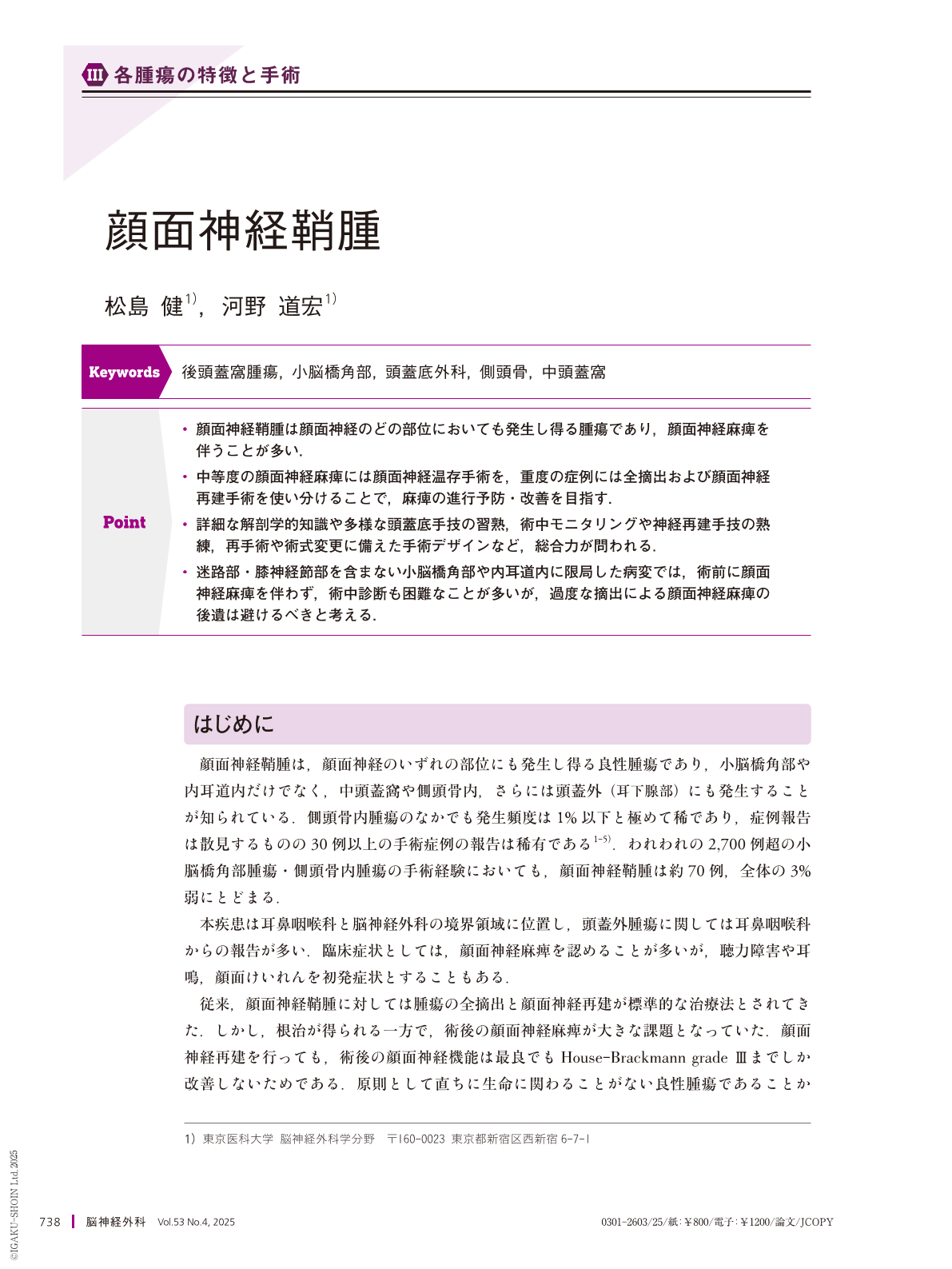Japanese
English
- 有料閲覧
- Abstract 文献概要
- 1ページ目 Look Inside
- 参考文献 Reference
Point
・顔面神経鞘腫は顔面神経のどの部位においても発生し得る腫瘍であり,顔面神経麻痺を伴うことが多い.
・中等度の顔面神経麻痺には顔面神経温存手術を,重度の症例には全摘出および顔面神経再建手術を使い分けることで,麻痺の進行予防・改善を目指す.
・詳細な解剖学的知識や多様な頭蓋底手技の習熟,術中モニタリングや神経再建手技の熟練,再手術や術式変更に備えた手術デザインなど,総合力が問われる.
・迷路部・膝神経節部を含まない小脳橋角部や内耳道内に限局した病変では,術前に顔面神経麻痺を伴わず,術中診断も困難なことが多いが,過度な摘出による顔面神経麻痺の後遺は避けるべきと考える.
Facial nerve schwannomas (FNSs) are rare, benign tumors that can arise along segments of the facial nerve, including the cerebellopontine angle, internal auditory canal, middle fossa, and temporal bones. Although traditionally managed with gross total resection and facial nerve reconstruction, the resulting facial nerve palsy has prompted a paradigm shift toward functional preservation. Based on>70 surgical cases, we established a tailored strategy based on preoperative facial nerve function and intraoperative facial nerve electromyograms. Patients with mild-to-moderate palsy underwent facial nerve preservation surgery with subtotal resection and osseous decompression under continuous intraoperative monitoring to preserve and improve facial nerve function. Patients with severe palsy underwent total resection with nerve reconstruction. We proposed a practical five-type classification based on the primary tumor location to guide the surgical approach. Cerebellopontine angle-type FNSs may present without facial symptoms, mimicking vestibular schwannomas, particularly if the labyrinthine segment or geniculate ganglion is not involved. In such cases, radical resection should be avoided to ensure functional preservation. To balance long-term tumor control with optimal facial nerve function, comprehensive surgical expertise is required, including detailed anatomical knowledge, diverse skull-base approaches, intraoperative monitoring, nerve reconstruction techniques and flexible surgical planning that allows for intraoperative modification.

Copyright © 2025, Igaku-Shoin Ltd. All rights reserved.


